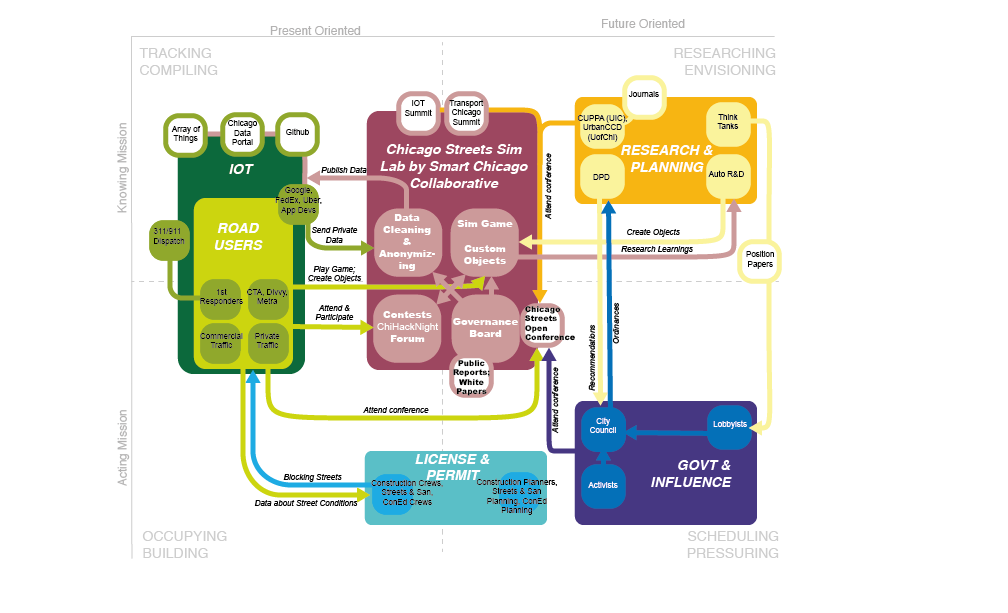Everyone in Chicago knows something about its roads. But innovation in transit is seen as a job for experts
How can we create a more open and inclusive model for innovating Chicago's transportation?
A Model-Based Design Process
To rapidly innovate at a civic rather than individual level, I designed several iterations of an abstracted system model. Using this model provides a basis for research, validation, and prototyping. A complex system such as this can be modeled and tested within just a few weeks rather than months. This is the reverse of the typical Human-Centered Design process; however, this reverse model is well-suited to understanding and intervening in a complex system.
The Approach
I began by identifying the stakeholders in Chicago transportation. The principle of open innovation is the flow of knowledge across a system, especially embedded/implicit knowledge.
I mapped the stakeholders to a 2x2 grid based on the type of knowledge that each holds. For instance, people in traffic care about the present state of the roads and their role is to occupying and act upon the roads, whereas Chicago's Department of Planning and Development (DPD) is concerned with the future of the city's roads and prioritizes knowledge and understanding of roads over direct action.
This analysis shows how isolated these groups are and how limited the flow of different types of road knowledge is. To grow innovation I must find a way to create or strengthen these connections.
The Solution
I designed the concept of the Chicago Streets Sim Lab as an innovation hub. At its heart is a game that lets anyone use real time road data to create their vision of Chicago roads. Conferences, online forums, and contests create additional dialogue. Elements of the Sim Lab sit within each of the four types of knowledge and interconnect. These unite and connect knowledge within the Lab environment.
Avoiding a Tragedy of the Commons
Large amounts of data with no regulation or controlling elements can cause havoc even when they are made publicly available. A governance board is put in place to review the inputs and implications of the data and the mechanics of the game. Conferences and publishing are other ways to increase transparency and communication with the wider community.
The Result
Connecting our various users into the Sim Lab provides a forum for each to access and contribute new types of knowledge across the system. Road knowledge and dialogue flows among all Chicago’s stakeholders to create a transportation future that works for all Chicagoans.
This final model surfaces hypotheses that can be researched and prototyped - for instance this model assumes that private, closed companies will contribute proprietary data to the city if it can be cleaned and anonymized. A next step would be to talk to these companies to see if such an arrangement is possible and prototype these data transformation processes.



